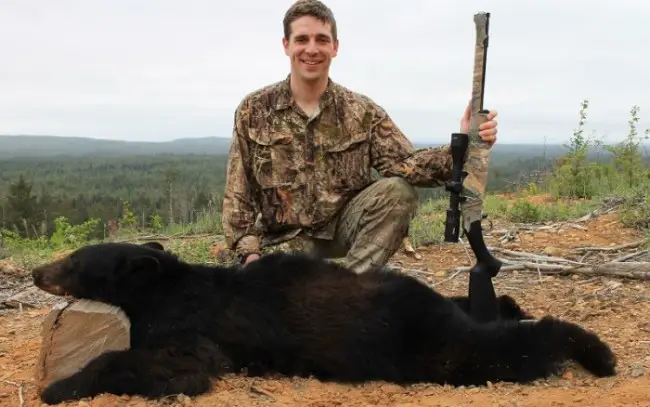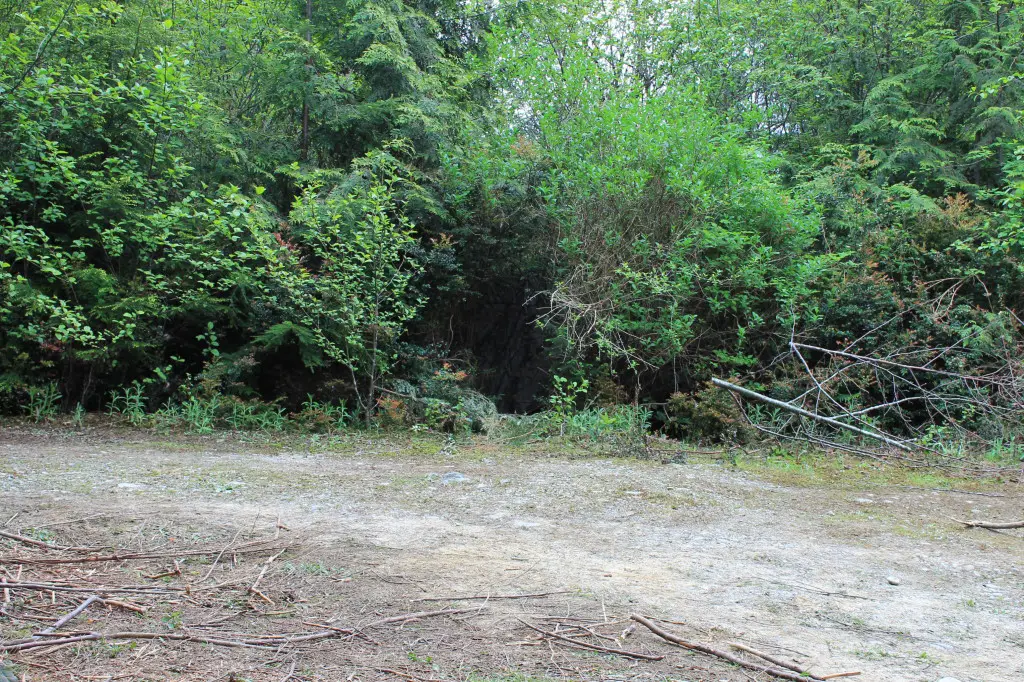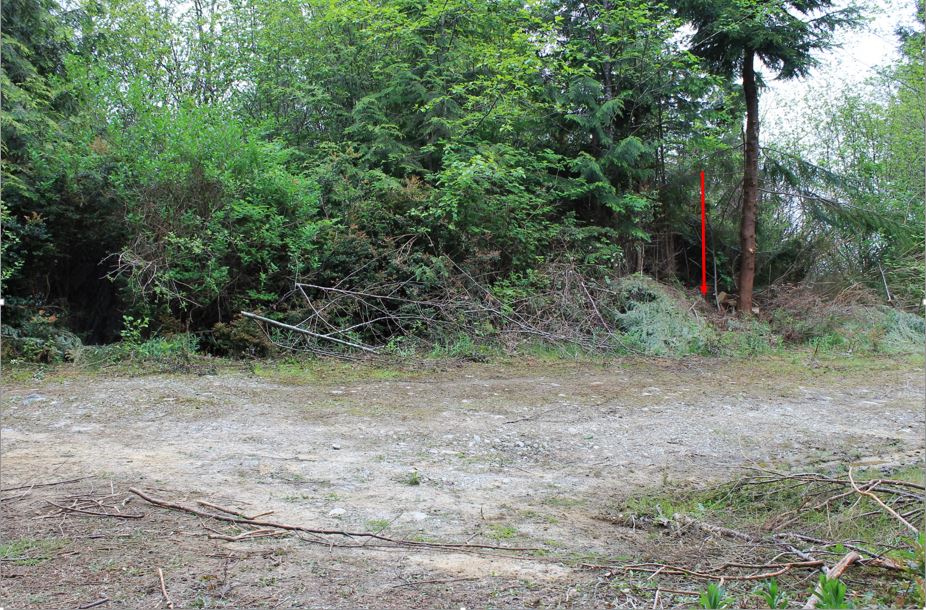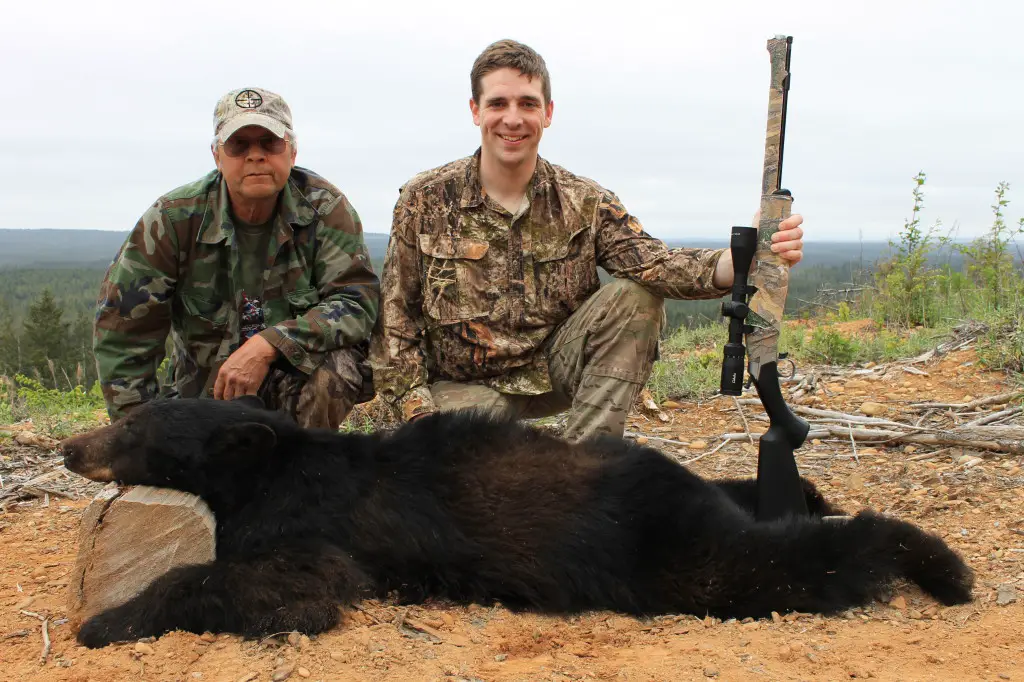Here’s how my 2015 spring bear hunt with Vern Lorton went on the Quinault Reservation.
I just got back from an awesome spring bear hunt with Vern Lorton, a bear hunting guide on the Quinault Indian Reservation of western Washington. Though this was not my first bear hunt, I hoped that it would be my first successful bear hunt in the State of Washington. Fortunately, he delivered a service beyond all my expectations and I had a great time.
Vern “Doc” Lorton, an Army and Vietnam veteran, specializes in hunting black bear over bait on the 208,000 acre Quinault Indian Reservation in western Washington. Since the habitat there is outstanding and the hunting pressure has traditionally been very light, the Quinault Indian Reservation has a very healthy black bear population. Unfortunately, the bears there have started eating the cambium layer on the reservation’s trees.
Obviously, this is very bad for the trees. Since the Quinault Indian Nation depends heavily on logging for income, they have legalized bear hunting over bait in order to control the bear population and reduce the damage they are causing to the trees. This makes for some outstanding bear hunting opportunities and the reservation is unique in Washington for being the only place in the state where black bears may be hunted using bait.
Vern is one of several different guides with hunting rights on the Quinault Indian Reservation. He has exclusive access about a dozen bait sites, which he regularly checks and refreshes during the bear hunting season.
I arrived early Friday morning and met Vern for breakfast. He then took me on a tour of his active bait sites. During our drive around the reservation, we refreshed his bait sites and checked his trail cameras for activity. At the time, he had seven different bears hitting five of his bait sites. Several of the bears were pretty small and several bears were only hitting the baits at night. However, there was one very nice looking bear consistently hitting the same bait every evening between 5:30 and 7:30 pm. This is the one that we decided to pursue.
Since the shooting distance would be very short, and since I would probably only get one shot regardless of the rifle I used, I elected to use my muzzleloader on my hunt. I set up my CVA Wolf Northwest with a 209 breech plug and a scope (both of which are legal on muzzleloaders in Washington if you’re not hunting deer or elk). My chosen load was a 290gr Barnes T-EZ propelled by 100gr of loose Hodgdon’s 777 powder.
Friday afternoon Vern took me to the bait that I would be hunting at that night. The bait site was located in a small clearing that was bisected by a road. The clearing was surrounded by very thick woods and the terrain dropped off sharply behind the bait site. He had a small, one man ground blind already set up and cleverly camouflaged just inside the woods and directly facing the bait barrel (see photo below).While I was getting set up in the blind, Vern left the truck running and went about dropping off more bait in an attempt to cover up any noises that I was making while getting situated. I also brought a “bear bomb” and some rags soaked in anise oil, which he strategically placed around the bait during this time as well. After I gave him the thumbs up, he drove off and parked a short distance down the road, waiting for me to call him on the handheld radio he gave me.
I sat in the blind all that afternoon and evening without result. When it got too dark to see, I called Vern on the radio and he came and picked me up. As it turns out, the bear came and ate earlier that afternoon before I started hunting. Based off this, we decided to hunt the same location first thing the next morning, in hopes that the bear would get hungry and come in earlier.
When I arrived at the stand the next morning, I was relieved to see that the bait was untouched, meaning the bear did not come in to eat after dark. After sitting in the blind for several more hours without seeing anything, Vern came and picked me up again and we had lunch. Early that afternoon I was back in the blind yet again.
This time I had a really good feeling that I did not have on either of the previous two hunts. When we arrived, the bait was still untouched, which was great news. At this point, it had been nearly 24 hours since that bear had eaten from this bait site. Either the bear had moved off to greener pastures, or it would come in and eat that evening while I was there.
There was a light wind blowing across the clearing from my right to left. Due to this, I set up my Ozonics HR-200 Scent Eliminator to blow out the left window of the blind (with the wind). I was hoping that it would live up to its advertised capabilities and make it more difficult for any bear downwind of the blind to detect me. I also made sure I was wearing hunting ear protection in the form of some Howard Leight Impact Sport electronic ear muffs. Finally, I set up my video camera on a tripod and aimed it at the bait in hopes of filming the action that night.
For the first few hours nothing of note happened. However, I noticed movement out of the corner of my eye around 7:30pm. I turned just in time to catch a glimpse of a bear moving through the woods to my left front. The bear slowly and stealthily moved across the clearing and disappeared into the woods just a few yards to the left of my ground blind (see photo below).
My heart rate rapidly accelerated and I struggled to control my breathing. The minutes slowly ticked by and I didn’t see or hear anything else from the bear. At this point, I was starting to wonder if the bear was actually there, or if my eyes played a trick on me. However, I still felt certain that I had indeed seen a bear and since I hadn’t seen it leave, it must still be there.
I spent the next hour sitting as still as possible and trying not to move or even breathe too loudly. I figured that the bear was sitting in the woods observing the bait and would come out just prior to dark if it was convinced that the coast was clear. With this in mind, the last thing I wanted to do was spook it by making a careless noise.
Sure enough, around 8:30pm the bear strolled out into the clearing and made a beeline for the bait. I carefully pushed “Record” on my video camera as the bear strolled across the small clearing. It grabbed a mouthful of bread and disappeared into the woods behind the bait without so much as pausing.
Though I was discouraged by the fact that the bear was soon out of sight, I was not surprised. Vern warned me that bears will commonly do exactly that, especially if they are afraid of a bigger bear in the area. He assured me that they almost always come back if undisturbed.
I took this opportunity to get my rifle set up on my shooting sticks and began looking through my scope in the direction that the bear had gone. After a handful of seconds, the bear’s head popped out of the woods. It sat there on it’s hindquarters for a minute or so and intently sniffed at the anise oil soaked rag hanging from the tree above it. During this time I contemplated shooting the bear in the neck.
However, such a shot is a very high risk/high reward proposition. If placed properly, the bear will go down immediately, but a few inches to either side will result in a lost bear. I restrained myself from making a rash decision and the bear soon disappeared into the woods again.
By this time I was starting to get a little frustrated. It was getting darker by the second and I would soon be out of shooting light. I resolved to take the next good shot that the bear offered me. A minute or so later, the bear appeared out of the woods again. It was acting very nervous at this point and picked up another mouthful of food and began to leave again.
The bear was standing broadside to me and I aimed just behind the right shoulder. It backed up a few steps then paused. I adjusted my aim point and squeezed the trigger. The woods exploded with the report of my muzzleloader and I was instantly enveloped in smoke.
I heard crashing in the woods for a few seconds, followed by a grunt, followed by more crashing, followed by silence. When the smoke finally cleared, the bear was gone. I called Vern on the radio and he was there within seconds. As dark closed in around us, we searched around the area where I last saw the bear, but we didn’t find any blood.
I was discouraged, but I felt pretty confident that I had made a good shot. We decided it would not be a good idea to follow a potentially wounded bear in the dark and resolved to come back the next morning for a more detailed search.
That evening, I ruminated for several hours, playing the shot over and over again in my head. I watched the video recording of the shot (which you can watch at the bottom of the article) several times and was satisfied that the bear was indeed stationary and oriented in the direction I remembered at the time of the shot. This assured me that I did actually make a good shot, though I would feel better when we actually found the bear the next day.
The next morning we returned to the site and began our search. We still did not find any blood, though we found a couple of pretty distinct trails that had been recently used by bears in the woods. The woods were incredibly thick. Vern brought a pair of garden shears and we used them to cut a path through the woods. Even so, the vegetation was still so thick that we had to crawl on our hands and knees.
After a few minutes of searching, we found the bear. She turned out to be a mature (4-5 years old) sow that weighed around 150-200 pounds. My bullet hit both lungs and the top of her heart before exiting behind her left shoulder. Mortally wounded, she ran only 20 or so yards before expiring. However, she died on a steep incline and rolled another 10-20 yards down the hill before coming to rest.
We had to cut her free of all the vegetation that she had become entangled in before starting the grueling task of dragging her back up the hill to the truck. After getting her back to the truck and taking some trophy photos, we went back to camp. Once there, Vern and I skinned the bear and loaded her into my cooler, thus bringing my spring bear hunt with Vern Lorton to a successful conclusion.
In short, I had an awesome time and enjoyed a great hunt. Vern took great care of me and I was very impressed with his hunting operation. He was friendly, knowledgeable, and helpful. It also didn’t hurt that he’s a fellow Army veteran as well. If you’re looking for a great bear hunting trip in Washington state, I cannot recommend Vern highly enough.
Enjoy this article about my bear hunt with Vern Lorton? Please share it with your friends on Facebook and Twitter.
Make sure you follow The Big Game Hunting Blog on Facebook, Instagram, Twitter, and YouTube.
NEXT: 308 vs 30-06 vs 300 WIN MAG: WHICH CARTRIDGE SHOULD YOU BE HUNTING WITH?
John McAdams is a proficient blogger, experienced shooter, and long time hunter who has pursued big game in 8 different countries on 3 separate continents. John graduated from the United States Military Academy at West Point and is a veteran of combat tours with the US Army in Iraq & Afghanistan. In addition to founding and writing for The Big Game Hunting Blog, John has written for outdoor publications like Bear Hunting Magazine, The Texas State Rifle Association newsletter, Texas Wildlife Magazine, & Wide Open Spaces. Learn more about John here, read some of John’s most popular articles, and be sure to subscribe to his show: the Big Game Hunting Podcast.






Awesome story! Damn, that moment when you noticed the bear from the corner of your eye… that must have been terrifying. For a moment there I wasn’t sure who was hunting whom :) The picture with the blind and the red arrow really gave me the chills, just seeing how close to you it must have been gives me the chills.